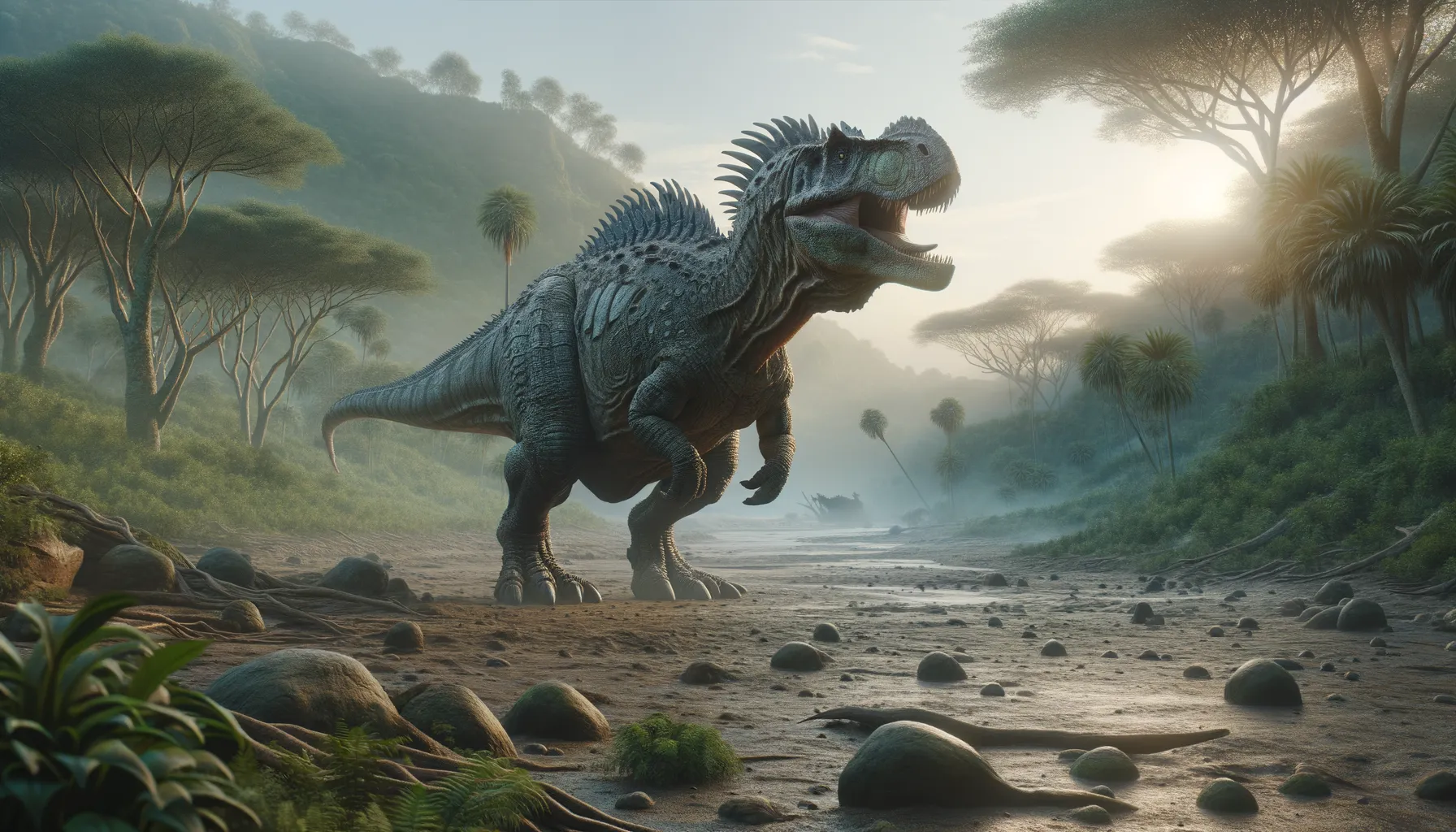
Sauroplites
Armored survivor of the ancient world.
Period
Cretaceous
Length
Approximately 6 meters long.
Height
Around 2 meters tall at the shoulder.
Weight
Estimated around 2 to 3 tons.
Sauroplites was an armored dinosaur known for its protective body plates. Living during the Early Cretaceous period, it roamed what is now eastern Asia. Its strong body and defensive capabilities made it well-suited for survival in a world filled with predators. Often compared to its more famous relatives like Ankylosaurus, Sauroplites remains a fascinating subject of study for paleontologists interested in dinosaur armor and lifestyle.
Diet
Sauroplites was a herbivore, feeding on low-lying plants. Its diet mainly consisted of ferns and other vegetation that it could easily reach.
Hunting
As a herbivore, Sauroplites did not hunt. Instead, it spent much of its time foraging for vegetation.
Environmental challenges
Sauroplites faced numerous environmental challenges, including competition for food resources with other herbivorous dinosaurs. The changing climate and varying availability of vegetation would have required adaptability. Predators would also have posed a constant threat, necessitating strong defensive adaptations. Additionally, the sheer size of this dinosaur meant it needed vast amounts of food and water to sustain itself.
Speed
Sauroplites likely moved slowly due to its large size.
Lifespan
Could have lived for several decades.
First discovery
First discovered in the Barremian-age rocks in China in 1953.
Fun Facts
- Sauroplites was a herbivorous dinosaur that lived during the Early Cretaceous period, about 130 million years ago.
- Its name means 'lizard soldier', reflecting the strong armor plates that covered its body for protection.
- Sauroplites belonged to the Ankylosauria group, known for their armored dinosaurs with bony plates and sometimes club-like tails.
- Fossils of Sauroplites have been discovered in what is now China, providing important insights into dinosaur life in Asia.
- Despite its armor, Sauroplites was a relatively small dinosaur, estimated to be around 5 to 6 meters long.
- Unlike many other dinosaurs, Sauroplites' teeth were adapted to eat low-lying vegetation, making it a proficient ground feeder.
- Sauroplites' defensive adaptations suggest it lived in environments where predators were a constant threat.
Growth and Development
Young Sauroplites would have hatched from eggs and gradually developed their protective armor as they matured. This armor would become a crucial survival tool against predators as they grew larger. It's likely that they remained with their parents or in small groups for protection in their early years. The growth rate of Sauroplites might have been similar to other ankylosaurs, developing slowly over several years.
Habitat
Sauroplites inhabited lush environments typical of the Early Cretaceous, which included forests and floodplains. These areas provided ample food resources, such as ferns and cycads. The dense vegetation also offered cover from predators. Being largely terrestrial, Sauroplites would have thrived in temperate climates.
Interaction with other species
Sauroplites likely coexisted with other herbivorous dinosaurs, often competing for the same food sources. Despite potential competition, coexistence would have been facilitated by differing sizes and feeding heights. Interactions with predatory species were primarily defensive, using its armor for protection. Its role as a prey species would have driven the evolution of its defensive adaptations.
Natural lifespan
Sauroplites could have had a natural lifespan extending up to 70 years.
Reproduction
Like other dinosaurs, Sauroplites likely reproduced by laying eggs. Males might have courted females through displays or calls, although the specifics remain unknown. Nesting sites would have been chosen carefully, likely in locations that offered protection and warmth. Parental care is a possibility, but remains speculative due to limited fossil evidence.
Social behaviour
Sauroplites might have exhibited social behavior, living in small groups for protection and social interaction. Herding could have minimized predation risks and improved survival chances for the young. Communication was likely limited but could involve visual signals or low-frequency sounds. The social structure would have played a crucial role in their survival and reproduction.
Fossil locations
Fossils of Sauroplites have predominantly been found in China. This region's rock strata from the Early Cretaceous period have provided rich insights into its existence. The Barremian-age deposits specifically host many remnants of this armored dinosaur. These discoveries underscore the significant paleontological value of East Asian fossil sites.
